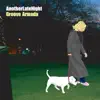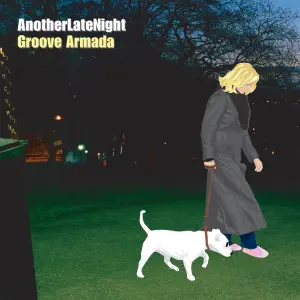


Acerca de Don Raye
Most songwriters of the 1930s never figured -- or even planned on figuring -- in the history of rock & roll. A few bluesmen got lucky (and Big Joe Williams and Willie Dixon got really lucky, as performers and composers); and every so often Irving Berlin's or Cole Porter's publishers would luck out when some rock or country artist decided to try their hand at something more sophisticated, but generally there wasn't a huge amount of cross-fertilization between the decades. Then there's the case of Don Raye.nn Never a figure ranked anywhere near Berlin or Porter, or the Gershwins, he was, nonetheless, a working songwriter whose music helped define jive and boogie-woogie at the end of the 1930s and the dawn of the '40s; and lived to see some of those same songs covered by the likes of Chuck Berry, the Rolling Stones, and Foghat some 30 years later. He was born Donald MacRae Wilhoite Jr., and his father was the composer of the sentimental old chestnut "Mother." The boy was a natural talent as a dancer, winning awards for his foot work; he entered vaudeville in his teens as a song-and-dance man under the name Don Raye. After starting to write songs to liven up his act, Raye realized that his work was not only good enough to sell to others, but that this might constitute a better living than the vaudeville stage; especially as he reached his 20s, the peak decade for any dancer's ability. In the mid-'30s, he was collaborating with Sammy Cahn and Saul Chaplin, as well as bandleader Jimmie Lunceford, and had developed a swinging style as a songwriter. Among his early hits was "Down the Road a Piece," a neat little amalgam of bluesy rhythm and vivid, catchy lyrics that was picked up by Freddie Slack and Will Bradley, and covered by everyone from Glenn Miller to Count Basie. Among the artists who enjoyed hits with Raye's songs were the Andrews Sisters, who had a particularly striking approach to "Well All Right! (Tonight's the Night)," their three voices and Vic Schoen's arrangement straddling pop and swing. In 1940, Raye went to Hollywood to work on the trio's first feature film, Argentine Nights. The movie wasn't much, but Raye, collaborating with Hughie Prince and Vic Schoen, came up with "Rhumboogie," a song that formally opened up a new phase in the Andrews Sisters' work: through it and the hits that followed, co-authored by Raye, they became the singing representatives of boogie-woogie.nn Raye had a special knack for adapting slang expressions and alliterative words to catchy musical hooks: "Beat Me Daddy, Eight to the Bar," for example, used the words "clink" and "clank" more musically (and memorably, and coyly, in the hands of the trio) than anyone could have thought possible. Picked up by the Andrews Sisters' three voices around Schoen's band arrangements, the results were irresistible to pop and swing audiences alike, cutting a wide swathe across the popular culture of the era. Raye was a fully integrated member of Schoen's orchestra for a time as well, going out on the road during their first tour as their leader while Schoen played trumpet and trombone with the band. His second film project with the Andrews Sisters, Buck Privates, yielded a pair of bouncy, slang-oriented classics that were among the defining songs of the 1940s: "Boogie Woogie Bugle Boy" (which was nominated for an Oscar) and "Bounce Me Brother, With a Solid Four." Also present in the score and co-authored by Raye was an exquisite period-patriotic number, "You're a Lucky Fellow, Mr. Smith," which Frank Sinatra thought enough of to record during the 1960s, remembering the era of the '40s. Raye can also be glimpsed in the movie, playing Dick Burnette and dancing with the Andrews Sisters at one point.nn Throughout the early '40s, Raye supplied a steady stream of songs to the Andrews Sisters and to dozens of films from Universal, including Hellzapoppin, In the Navy, Keep 'Em Flying, Ride 'Em Cowboy, Crazy House, and Reveille With Beverly, usually in partnership with Gene DePaul. Every so often, he would break away from the boogie-woogie and rhythm-style numbers for which was known, as with the big Western ballad "Bring Me My Saddle" in Ride 'Em Cowboy, or "I'll Remember April" from the same movie. The latter was predicted as a huge hit, but it took a lot of work from Raye just to get it into the movie -- the producers had expected boogie-woogie from him -- and from Jack Kapp at Decca Records to get it out as a pop standard, recorded by Kitty Carlisle and Bing Crosby. By 1949, when he retired from movie work and most of his songwriting activities, Raye's music had been recorded by every big-name performer in the business, including Harry James, Woody Herman, Jimmy Dorsey, Louis Armstrong, Sarah Vaughan, and Dinah Washington.nn Strangely enough, even during his retirement, Raye's music didn't disappear; instead, his songs proved among the more enduring of '40s tunes. The Andrews Sisters helped by reprising their work on Capitol Records in the mid-'50s (even enjoying a new run at the charts late in the decade with "Well All Right! (Tonight's the Night)"). What's more, a few of Raye's late-'30s and mid-'40s numbers found new life in the new generation of performers: Merrill Moore grabbed on to "House of Blue Lights" (a number Raye had co-authored with Freddie Slack) and "Down the Road a Piece," which were also picked up by Chuck Berry; and in 1964, the Rolling Stones featured "Down the Road a Piece" (probably learned from the Berry recording) on Rolling Stones Now. Acts like Foghat subsequently picked up the song, and even during the 1970s, the Flamin' Groovies and Commander Cody & His Lost Planet Airmen were keeping Raye's work before the public with fresh readings of "House of Blue Lights"; thus making him one of the more ubiquitous '30s-'40s songwriting talents of the 1970s. In 1972, Raye received perhaps the most unexpected tribute to his career when Bette Midler took her recording of "Boogie Woogie Bugle Boy" (based on Schoen's original arrangement) back to the Top Ten on the charts, 31 years after its last appearance among bestselling songs; in the process spearheading a revival of interest in the Andrews Sisters. ~ Bruce Eder
Nosotros
Notas
